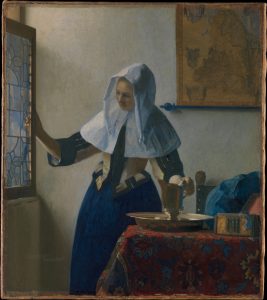Although the Gelberg Variations has nothing to do directly with Bach, or even with the Goldberg Variations themselves, one of my very favorite pieces of music is the Bach Cello Suite no 1. I love the intense simplicity of it–just a single instrument, playing a very complex melody. It sounds to me like what a person’s thoughts sound like when he’s working through a difficult problem, and finding the answer. The melody is both the thought process and the result.
And I especially love this ad from a number of years ago. It’s by American Express, and it combines the prelude from the Cello Suite with a series of images of broken items, plus voiceover. Each item by itself is inanimate, mute, but when viewed together, in combination with the voiceover and music, we learn that something is wrong. The second half of the commercial shifts–the music shifts to the sound of resolution, and the items shown are positioned so that they now look happy. The intended message is that although things sometimes go wrong when we make purchases, American Express has the tools to make things right.
I don’t have an American Express card. I don’t work for American Express, nor do I have any relationship with them. But I keep coming back to this ad, because there’s something so pure in its expression–images of broken, then fixed, things, plus music, plus simple dialog. This ad achieves something that I want the Gelberg Variations to achieve: each post, each work, should be a single, cohesive piece, whose purpose and message is clear. If a post is long, it should reward the reader for sticking with it. If the subject or style seems random, there should always be a reason for it.
The Bach connection here is somewhat tenuous, but so be it. Enjoy, and until next time.

